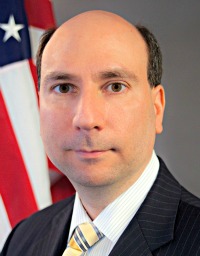After a rocky few years of Flash Crashes, trading glitches and botched IPOs, the Securities and Exchange Commission may finally be making headway in its battle with the streaming reams of incomprehensible and diffused electronic data that defines the modern U.S. securities trading markets.
The headway is being made by a team of data geeks, led by Gregg E. Berman, a former senior advisor to the Director of the Division of Trading and Markets.

Berman, named Associate Director of the Office of Analytics and Research in the SEC’s Division of Trading and Markets in mid-January, oversees a small army of data- and research-driven analytic experts that now populate the SEC as it attempts to keep up with increasingly modernized securities trading and a growing number of exchanges and electronic trading platforms. Although each SEC division has a similar data-focused office-an initiative begun under former Chairman Mary Schapiro-Berman’s role within the Trading & Markets division puts his group on the front lines.
Several SEC executives speaking at the Trading & Markets panel at the annual “SEC Speaks” event this morning singled out Berman and his office, which was established last year, for starting to bring clarity to how markets and market participants behave.
“Around the office, Gregg’s group is known as the ‘League of Extraordinary Gentlemen’,” said Brian A. Bussey, Associate Director for Derivatives Policy and Trading Practices. “And it is one group that is not made up of lawyers, but instead actual market and research experts.”
Berman explained to the panel that the office’s main focus was to add to the level of financial expertise at the SEC, noting his group employs former fixed income trading professionals and credit derivative swap experts.
He also said his group’s mandate was to provide the SEC with the research and analytical underpinning to its trading- and markets-related policy initiatives. He explained, for example, that the early testing of the SEC’s much-anticipated MIDAS platform-which stands for Market Information Data Analytics System-has already given the division an idea of the type of information it can gather.
MIDAS, which the SEC expects to launch in full later this year, will stream real-time trading data from all 13 exchanges directly into the SEC office for analysis. As a testament to how thinking has evolved and modernized within the SEC, the agency chose not to build the system from scratch itself, but instead contracted with New Jersey-based trading firm Tradeworx for the project.
Berman said that a run of the MIDAS two weeks ago accumulated almost 980 million “individualized trading events”-posted orders, order modifications and cancellations, trade executions and even off-exchange executions-in a single trading day. “That’s almost a billion events a day,” Berman said, adding that with about 250 trading days per year, the system is going to produce a significant amount of researchable data.
That data will be used to look for what Berman called “anomalous behavior” in the markets, such as numerous cancelled trades, spikes in intraday volatility and odd changes in price spreads. “This system will really allow us to drill down into the raw data,” Berman said. “And in a larger extent, we will be able to see why markets behave the way they do sometimes.”



